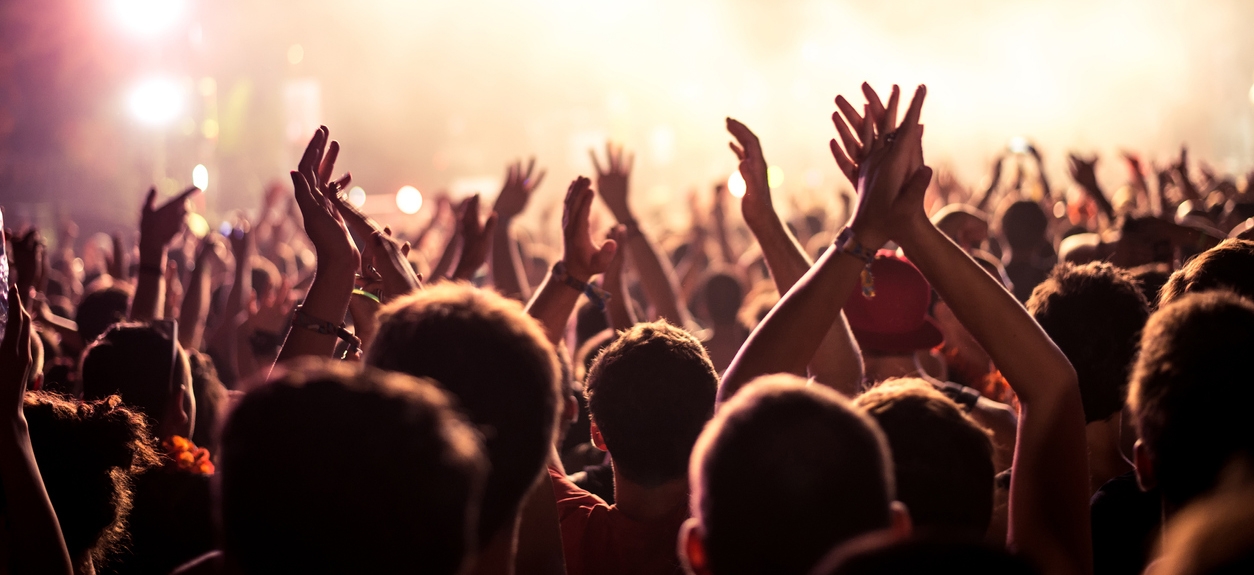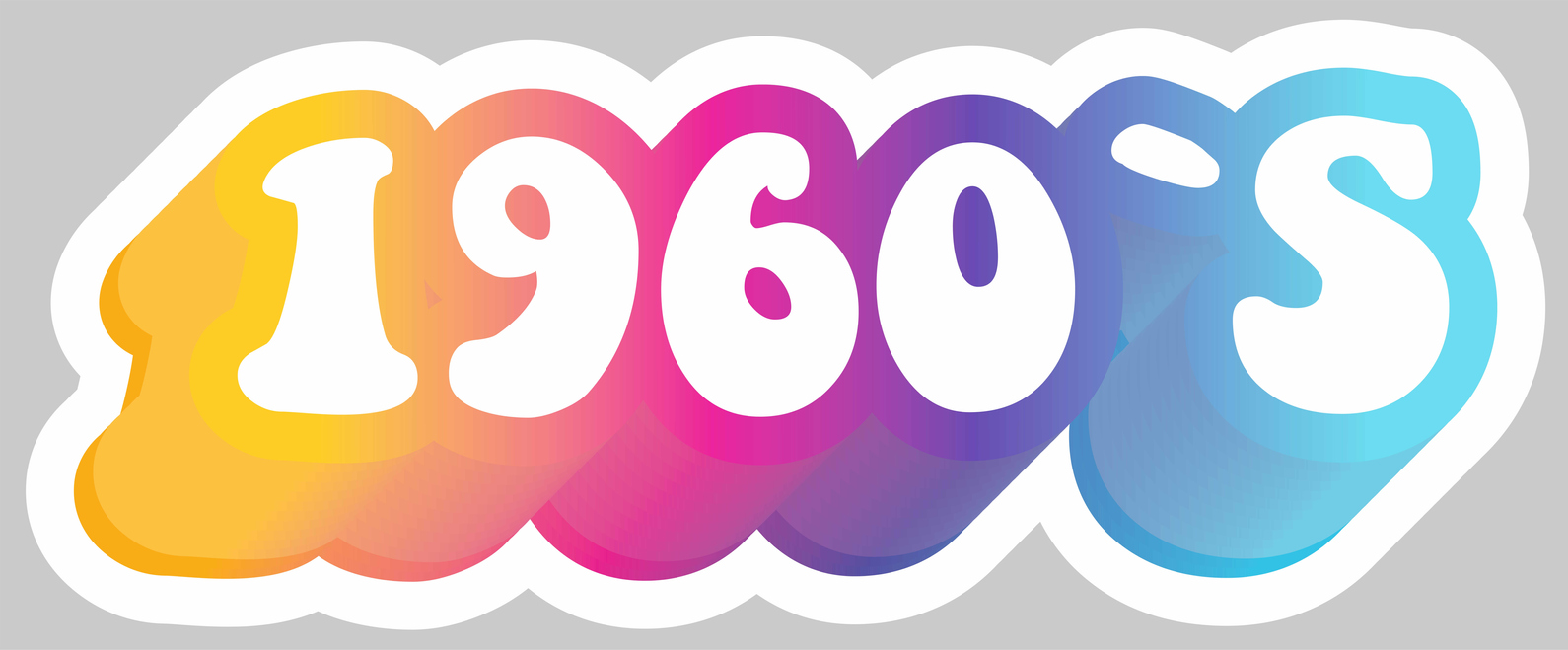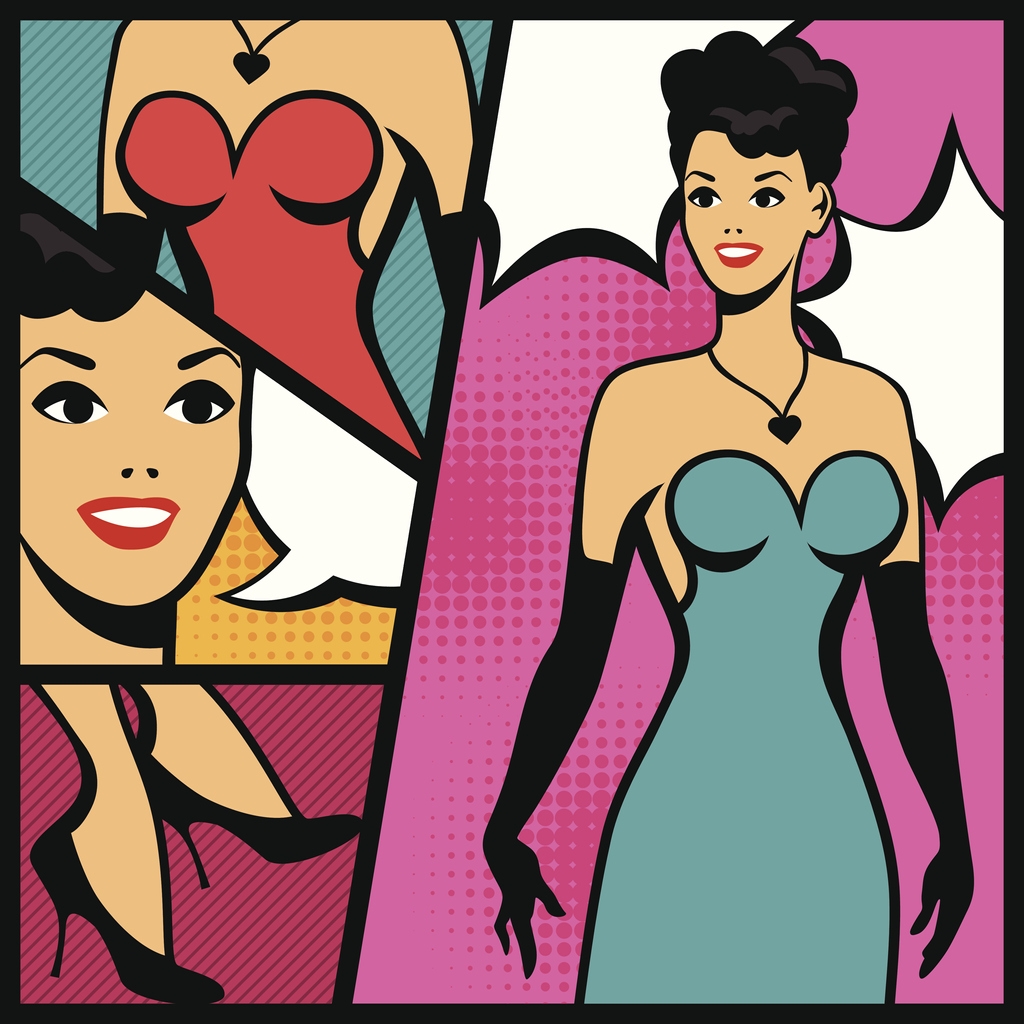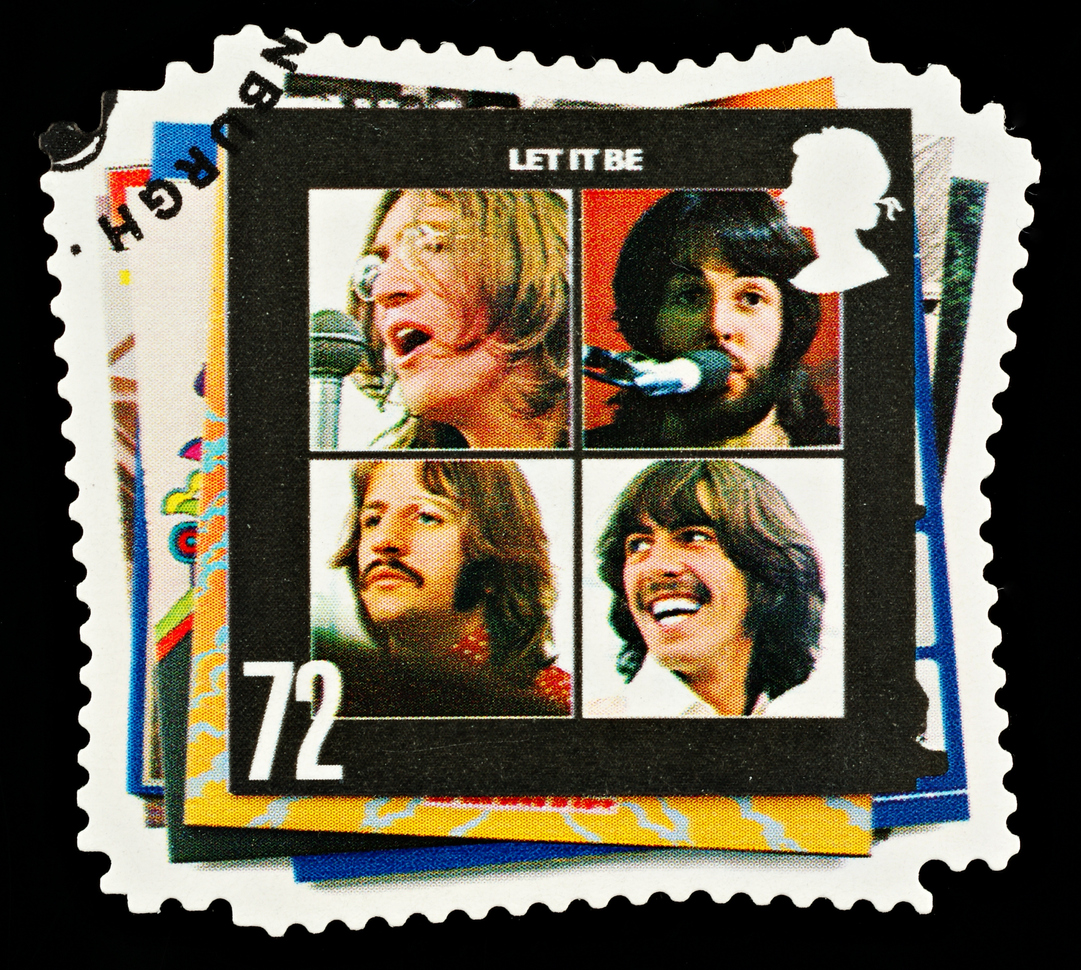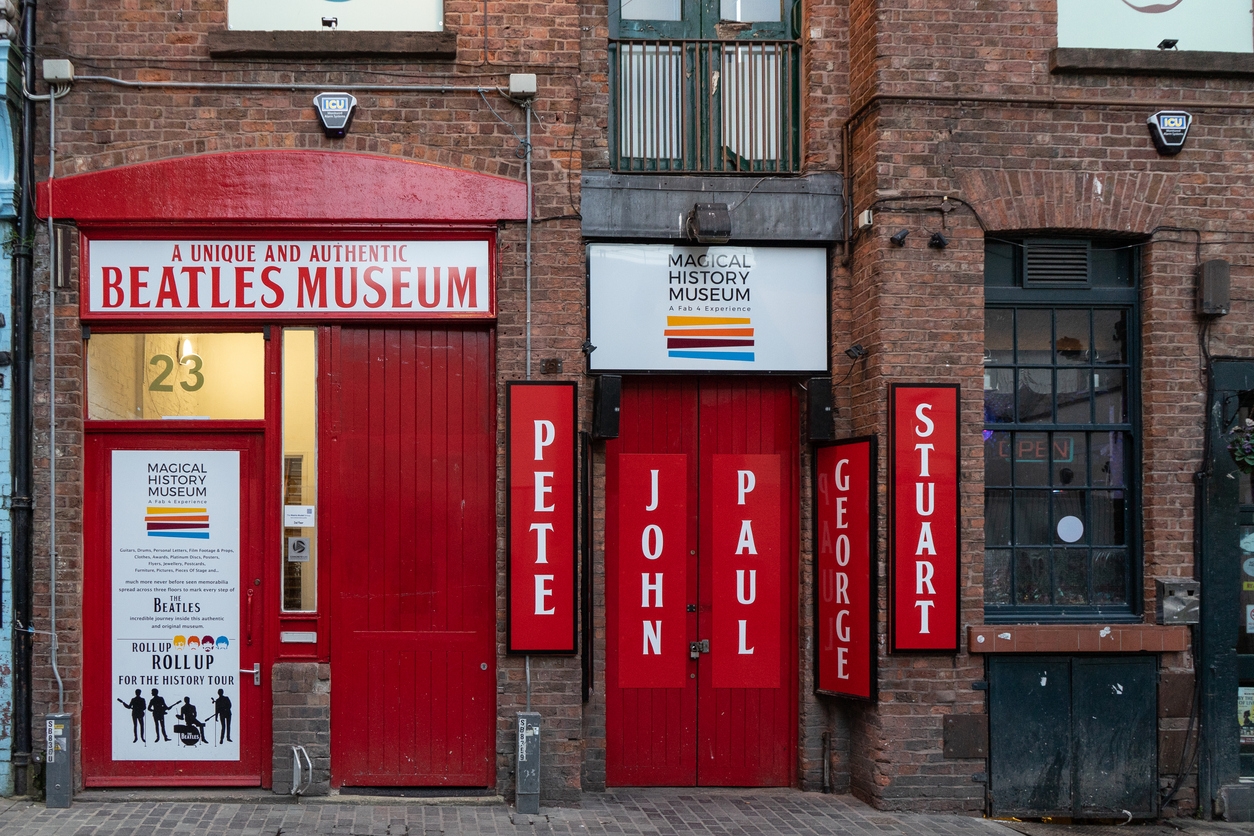Background
Back in the 1960s, there was a musical movement referred to as the British Invasion. It was composed of British rock-and-roll or beat groups whose popularity spread fast to the United States. It began with the successful arrival of Liverpool’s Beatles in New York in 1964, continuing with the Rolling Stones and many other bands. Building on 1950s United States models, these musical groups incorporated such local musical traditions as skiffle or acoustic drummer-less ensembles, dancehall, and Celtic folk.
The British Invasion and the subsequent cultural revolution of the 1960s era was a major turning point in the history of music and culture of America. When the 1960s came, America found itself in the biggest and most dramatic revolution of its history. But what is its impact on American culture? If you also want to learn about it, you’re in the right place.

crowds cheering at a music festival
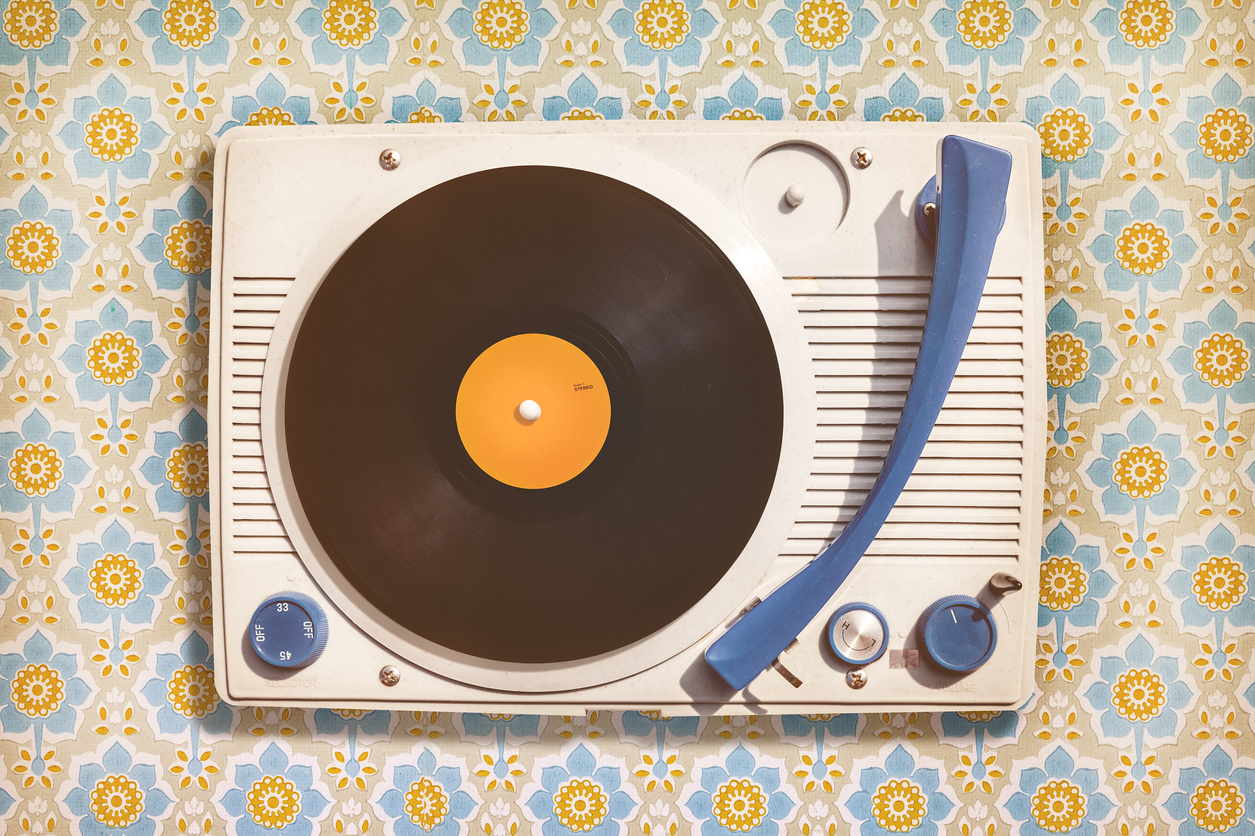
a vintage record player with floral background

a guitarist performing on stage

woman dressed in various 60s fashion
In this post, we are giving you important information about the history of the 1960s British Invasion, what influenced it, its key characteristics, and its cultural impact on the arts, music, education, and fashion in America. Also included as some of the most popular British Invasion bands and mind-blowing facts about the 1960s British Invasion.
The History of the 1960s British Invasion
The British Invasion was a phenomenon that happened in the mid-1960s when rock and pop music acts from the United Kingdom and other features of British culture became popular in the United States. It was significant to the rising “counterculture” on both sides of the Atlantic. Pop and rock groups, including the Beatles, the Rolling Stones, and The Who, were at the forefront of the Invasion.
In the late 1950s, the rebellious tone and image of the U.S. rock and roll and blues music became popular with British youth. While the early commercial attempts to imitate American rock and roll mostly failed, the trad jazz-inspired skiffle craze, with its DIY attitude, was the starting point of some British Billboard singles.
Young British groups began to mix different British and American styles in various parts of the United Kingdom. This includes a movement in Liverpool in 1962, which became known as Merseybeat, hence the “beat boom.” In that same year, the first three acts with British roots to reach the Hot 100’s summit were featured. These include the Tornados’ instrumental “Telstar,” which was written and produced by Joe Meek. It was the first record by a British group to reach number one on the US Hot 100.[1]
Rock swept Britain, and by 1964, Greater London could claim the Rolling Stones, the Who, the Yardbirds, Dusty Springfield, and The Kinks, to name a few. Manchester had the Hollies, Freddie and the Dreamers, and Wayne Fontana. Newcastle had the Animals, while Birmingham had the Spencer Davis Group and the Moody Blues.
Bands emerged from Belfast to St. Albans, with more inventive artists arriving to keep the styles moving forward. These included the Move, the Troggs, Donovan, and John’s Children. While the beat boom gave Britons relief from the post-imperial humiliation of hand-me-down rock, the Beatles and their ilk brought the United States more than credible simulations. They came as foreign ambassadors with distinctive accents, slang, fashions, and personalities.
In 1964, the Beatles’ first film, “A Hard Day’s Night,” further painted England as the center of the rock universe. American media took the bait and made Carnaby Street, London’s hip fashion center in the 1960s, a household name.
The United Kingdom sent a stream of hits across the Atlantic from 1964 to 1966. In addition to the Beatles, hits from other bands like Peter and Gordon, the Animals, Manfred Mann, Petula Clark, Freddie and the Dreamers, Wayne Fontana and the Mindbenders, Hernan’s Hermits, the Rolling Stones, the Troggs, and Donovan all topped the Billboard’s singles chart. These invaders had borrowed American rock music and returned it to a generation largely unaware of its historical and cultural origins.
Time magazine effectively raised the white flag in April 1966 with a cover story on “London: The Swinging City.” After that, peace quickly followed. By 1967, a propagation of English and American bands were equal partners in one international rock culture.[2]
What Influenced the British Invasion?
The first wave of American rock and roll artists, such as Chuck Berry, Elvis Presley, Fats Domino, and Buddy Holly, along with traditional blues and rhythm and blues or R&B music, profoundly influenced the bands that formed the backbone of the British Invasion. These musicians abandoned the roots-driven sound of skiffle in favor of a blend of those three influences. It was also fueled by youthful exuberance, and most importantly, it is focused on playing their own instruments and writing their own material.
Fans who were mostly teenagers responded to the hard-driving backbeat and unpolished charm of the British bands with enthusiasm, which rivaled the dedication to Elvis. In particular, the Beatles inspired hysteria among their fans, which was dubbed “Beatlemania.” [3]
The Key Characteristics of the British Invasion
There are a few characteristics that defined the should of the British Invasion. Here are some of them:
American Inspired Sounds
Some of the genres that forged the British Invasion’s sound include early rock and roll artists, R&B, blues, country-western, and even gospel and folk music. There were bands that adapted the material for a pop audience, while others, such as the Rolling Stones, had an almost fanatical devotion to the “pure” sound of the blues. About every British Invasion act included American songs in the live performances and recordings. For example, the Beatles covered Little Richard’s “Long Tall Sally,” while the Rolling Stones played Chuck Berry’s song “Carol” and Buddy Holly’s “Not Fade Away.”
Delivered the Beat
The British Invasion’s rowdier sound was anchored on the solid backbeat of R&B music and a 4/4 rhythm. The Beatles and others played for loud and energetic crowds who wanted to dance. It also worked for various musical styles, such as rock, pop, and blues. Even American standards got all supercharged by what the fans called Beat music, Merseybeat, or British beat.[3]
Basic Line-Ups
The majority of British Invasion acts were built around a lineup of rhythm and lead guitars, drums, bass, and sometimes piano. This was a structure borrowed from early rock and R&B acts. The emphasis on raw power and rhythm focused on the band as an equal unit and not as a backing sound for a singer. It had become a predominant arrangement for the rock bands that followed.
Vocal Harmonization
The vocals of the Beatles were defined by the crisp three-part harmonies. Other British Invasion bands also lend an element of sweetness to the beat. This was adopted from American vocal groups of the 1950s and Southern-based acts such as The Everly Brothers, who got it from traditional rural, folk, and gospel music.[3]
The Cultural Impact of the 1960s British Invasion on America
The British Invasion totally changed the sounds of rock and roll. The original Beatles onslaught opened the floodgates and gave a boost to other cultural exports, like art, film, and television. British Invasion acts have influenced American fashion, style, and other manners of culture in the 1960s. It became popular as the counterculture as the groups gave the young rebels of the 1960s something to relate to, influencing what defined a cultural rebel. It was a turning point for American culture, fighting conservative and repressive lifestyles from the 1950s.
Cultural Impact of the British Invasion on the Arts
In the 1960s, art, like the new American society, became less traditional and more open to new concepts. Lots of new abstract paintings and art pieces became popular for their symbolic value. The art back then mimicked the musical movement of the time, where more abstract song ideas became famous and old techniques were changed or entirely disregarded.
There was also a new artwork movement called Pop Art that was introduced. It was headed by Andy Warhol, which featured paintings of iconic American symbols, such as dollar bills, electric chairs, mushroom clouds, and Coca-Cola. A lot of these were influential, controversial, and reflective of the social attitude that was brought about by the British Invasion.[4]
Cultural Impact of the British Invasion on Music and Concerts
The 1960s British Invasion proved a huge impact on the music scene, mainly on rock and roll in America. The success of British groups in America led to the integration of British Skiffle and rock and roll into American blues and jazz. It also influenced lots of American bands, including The Monkees.
Aside from that, concert etiquette also changed radically with the British Invasion for both the fans and the performers. One example was the excessive destruction of the Who’s sets following their performances. The popularity of rock and roll also changed a lot. For the first time, rock and roll were seen as mainstream and not just music young people danced to. The far-fetched performers of the 1960s left a prominent mark in the history of rock and roll, which we can still notice at the present time.[5]
Cultural Impact of the British Invasion on Education
Public schools in America had been merged by law by the 1960s. However, there were many Americans who were not happy with this decision. The rock and roll movement powered by the British Invasion helped the civil rights movement, as rock and roll was what both black and white people loved.
The 1960s were an era for another equality movement on education, and it was led by women. As the decade brought about a change in the usual “stay at home” life for women, more went to seek secondary education. Feminists such as Betty Friedan pushed for a difference in the societal expectations for women. They urged women to pursue careers after secondary education.[6]
Cultural Impact of the British Invasion on Fashion
Along with the changes and development of rock and roll music, the British Invasion was also a defining moment in American culture as it drastically redefined the social standards and expectations of America and its people. Before the British Invasion, America was a very repressive society when it came to arts, recreation, and fashion. Uniformity and traditionalism were common in different aspects of American life. With this, most people back then preferred a conservative life that didn’t draw attention to themselves.
However, the upheaval of the British Invasion redefined these outlooks and altered what was well-thought-out to be a social norm. In the 1960s, people started to dress more casually, and women began to live more independently. Even though there was still pressure to obey society, people, particularly the youth, started to feel fine in breaking the norms. The conservative way of life started to regress as people started to create new music, try out new fashion styles, and follow eccentric lifestyles.
The British Invasion brought about a whole new social order. Since then, a teenager walking around in jeans and a t-shirt that said “The Beatles” became a normal sight.[7]
The Most Popular British Invasion Bands
Here are some of the bands that became very successful in the United States during the 1960s British Invasion:
1. The Beatles
Beatlemania happened for a good reason, as the Beatles were not an average boy band. Paul McCartney and John Lennon had the ability to write pop songs that were pretty and not sentimental. George Harrison was an innovator when it came to playing the guitar and finding unique notes to use instead of the usual ones. Aside from that, he also never overstayed his welcome, with solos short and concise, making every second of the song count.[8]
It’s amazing how McCartney, Lennon, Harrison, and Starr were able to transform several times from 1962 to 1965. In such a short time, from their song “Please Please Me” to mature ones such as “Nowhere Man” and “In My Life” is evidence enough as to why they still resonate decades after.
2. The Rolling Stones
The Rolling Stones kept the blues alive and well in their early days. Richards and Jagger always knew how to make a tune that was rough around the edges without surrendering to cheap shock value. While the Beatles were masters of beautiful love songs, the Rolling Stones were the masters of repulsion and wrath. Their songs, “The Last Time,” “Satisfaction,” “Play With Fire,” and “19th Nervous Breakdown,” showed some of the top musicians of their day in gleeful anger.[8]
3. The Kinks
The Kinks were among the pioneers of hard rock, even before Ray Davies began reflecting on the beauty and futility of English culture. The testament of four wild men was their song “You Really Got Me.” However, it was not long before they started letting Indian influences into their songs, such as in “See My Friends.” Ray’s wit was shown on their best Invasion period track, “A Well-Respected Man,” which was a strike on the upper classes and a preview of the satirical nature of their future songs.[8]
4. The Who
Townshend, Moon, Daltrey, and Entwistle were only in the British Invasion era for its last year, which was 1965. However, they stuck out quickly. In fact, one did not need to see them live in order to feel their energy. Their songs “I Can’t Explain” and “My Generation” made the dawn of a new direction in rock. The Who was among the few bands, even to this day, that put such vigor into their work.[8]
5. The Yardbirds
The Yardbirds was led by Eric Clapton, Jimmy Page, and Jeff Beck. This was the group that gave garage rock a perfect start before they became household names. They worked off of the blues the Rolling Stones loved but combined it with a wild, experimental feel. Some of their songs that stood out include “Shapes of Things,” “Heart Full of Soul,” and “For Your Love,” as they all had a raw intensity that no one else was really trying back then.[8]
6. The Animals
Among the British Invasion artists, Eric Burdon has one of the most soulful voices of all time, and that was what kept the Animals together. The band was one of the most socially conscious acts across the pond. Whether it was their take on “We Gotta Get Out of This Place,” “Don’t Let Me Be Misunderstood,” or “House of the Rising Sun,” the band spoke for the working class with no regrets.[8]
7. The Dave Clark Five
The Dave Clark Five had written some of the best songs that are based on sadness and anger. One of the things that are great about this band is that they can make breezy tunes that do not carry much weight. They can make heavier things much easier to appreciate. Some of the best songs of their time include “Because,” “Glad All Over,” and “Put a Little Love in Your Heart.” [8]
8. The Hollies
Before Graham Nash teamed up with Stephen Stills and David Crosby, he first belonged in a group called the Hollies, which became big on covers and light pop songs. It was one of the most accessible British Invasion bands. However, they hit their peak just after the British Invasion, but they still earned their names among the greats. Some of their best hits were “I’m Alive” and “Look Out Any Window.” [8]
9. The Zombies
This band was led by keyboardist Rod Argent and vocalist Colin Blunstone. However, the Zombies still seem peculiar to the British Invasion norm. There were not really any other bands that built their songs off of keyboard riffs. Their songs showed off a Motown vibe, and their band was all about capturing a cool atmosphere. However, they were quickly forgotten after the height of the Invasion.[8]
10. Herman’s Hermits
This was another band that prided themselves in light pop songs. They have lovely song arrangements, such as “There’s a Kind of Hush,” “I’m Into Something Good,” and “I’m Henry The Eighth.” However, their best track was based on a descending chord progression that is truly beautiful, which is the stripped-down song “Listen People.” [8]
British Invasion Bands with the Most U.S. Top 20 Hit Singles
From 1964 to 1967, four popular bands from the British Invasion were present in the U.S. Top 20 charts. Those bands include The Beatles, Herman’s Hermits, The Dave Clark Five, and the Rolling Stones. Below are charts of their hit singles, including the high chart position and number of weeks on charts for each of their songs.
1. The Beatles
The Beatles were indeed the most popular and sought-after British Invasion bands in the 1960s. From 1964 to 1967, the band had dominated the top 20 charts in the United States. They have a total of 25 chart hits in that span of time, and 18 of those became the number one chart hits. Even now, their songs are still among the most favorite of a lot of people.
2. Herman’s Hermits
The songs made by Herman’s Hermits were also loved by many listeners and fans in the United States. From 1964 to 1967, they had a total of 14 singles that belonged to the U.S. top 20 hit charts. Among those, two singles topped the charts both in 1965.
3. The Dave Clark Five
A lot of people were able to relate to the songs made by The Dave Clark Five back in the 1960s, as most of them are based on sadness and anger but have light and breezy tunes. From 1964 to 1967, 13 of their songs have entered the top 20 hit charts. Their single “Over and Over” placed number one on November 20, 1965.
4. The Rolling Stones
The Rolling Stones was probably the next most popular band in the British Invasion next to The Beatles for a lot of people. This was the band that kept the blues alive in the 1960s. However, most of their songs were about disgust and anger. Still, people were able to appreciate their music. From 1964 to 1967, they had a total of 12 singles that were able to enter the U.S. top 20 hit charts. Among those, 4 singles became number one hits.
In addition to these four popular British Invasion bands, there were many others that were able to make their singles be included in the top 20 U.S. charts back in the ‘60s. Some of them include Peter and Gordon, The Kink, The Yardbirds, The Animals, Gerry and the Pacemakers, The Hollies, Dusty Springfield, Bee Gees, The Zombies, The Bachelors, and more. This just proves that in those years, the United States’ music scene was indeed dominated by British bands and artists.
The Role of the Beatles in the 1960s British Invasion
When people hear about the 1960s British Invasion in the United States, most of them will think about the Beatles. The British Invasion was initially dismissed by the entertainment industry as a fad. But the industry proved its worth with a flock of pop hits on the American charts. In particular, The Beatles hushed critics in 1964 when they claimed the top five positions on the Billboard Hot 100 singles chart. This was a feat that remains unbroken. By the time they made their historic appearance in New York City on The Ed Sullivan Show in February 1964, they were genuine superstars.
The Beatles were the ones who opened the door for lots of other British artists and bands. Some of the bands followed their example by toenailing the line between rock and c pop, such as the Dave Clark Five, Manfred Mann, the Pacemakers, and the Hollies. Others, on the other hand, were pure pop acts, such as Freddie and the Dreamers and Herman’s Hermits. There were also some that were immersed in a courageous mix of blues and rock.
The British Invasion branch encompassed the Kinks, the Who, the Zombies, the Animals, and Them, which featured a young Van Morrison. Along with them were other British Invasion members, including folk-pop performers like Chad and Jeremy and as well as soul-inspired singers such as Tom Jones and Dusty Springfield. All of them enjoyed success on the American charts until the tastes of Americans changed from pop and rock to harder psychedelic groups.
Today, many British Invasion acts remained relevant even though there have been lots of changes that happened. These include the Beatles and the Rolling Stones. However, others faded into obscurity.[3]
Interesting Facts About the 1960s British Invasion
If you are looking for more information about the 1960s British Invasion, below are some of the interesting facts about it that you should learn about.
- The start date for the British Invasion of the 1960s is usually given as February 9, 1964. It was the day that The Beatles made their legendary appearance on the Ed Sullivan show.
- There were more than 50,000 requested tickets for the Ed Sullivan show that featured The Beatles. However, the theater only had 703 seats back then.
- Of all the people who watched television on February 9, 1964, 75% of them were tuned in to watch The Beatles perform. That was equal to 73 million people who watched them perform five songs.
- After The Beatles enjoyed a 14-week run at the top of the charts, on May 9, 1964, Louis Armstrong knocked them out of the number one spot with his single “Hello, Dolly!” However, Armstrong only owned the top spot for a week.
- Before Ringo joined The Beatles, the band had a different drummer. His immediate predecessor was Pete Best, who performed with The Beatles from 1960 to August 16, 1962, when he was ousted for a better drummer, Ringo Starr.
- Aside from music, the Americans’ fashion sense was also influenced by the British acts.
- Skiffle refers to a music style that blends jazz, folk, and country. It originated in the United States, but British Invasion bands revived the style and were heavily influenced by it.
- Even though Chad & Jeremy were part of the British Invasion, they did not become popular in the United Kingdom. The highest chart success they got and the only one was #37 with “Yesterday’s Gone.” But in the United States, they entered the Billboard Hot 100 ten times from 1964 to 1966.
- Before 1964, there were only two British singles that had ever topped the Billboard Hot 100 chart. These were Acker Bilk’s “Stranger on the Shore” and The Tornadoes’ “Telstar.”
- From 1964 to 1965, British acts were number one for a surprising 56 weeks combined.
References
[1] Paese, M. (2020). British invasion. The History of Rock and Roll Radio Show. Retrieved May 4, 2022, from http://www.thehistoryofrockandroll.net/british-invasion/
[2] Robbins, I. A. (2021, January 23). British invasion. Encyclopædia Britannica. Retrieved May 4, 2022, from https://www.britannica.com/event/British-Invasion
[3] MasterClass, S. (2022, February 24). Inside the British Invasion: 5 popular British invasion bands – 2022. MasterClass. Retrieved May 4, 2022, from https://www.masterclass.com/articles/british-invasion-explained#what-influenced-the-british-invasion
[4] Katsoufis, L., Amerault, R., Rose, N., & Plano, T. (2020). The Arts. The British Invasion of the 1960’s. Retrieved May 4, 2022, from https://thbritishinvasionof1964.weebly.com/the-arts.html
[5] Katsoufis, L., Amerault, R., Rose, N., & Plano, T. (2020). Music and Concerts. The British Invasion of the 1960’s. Retrieved May 4, 2022, from https://thbritishinvasionof1964.weebly.com/music-and-concerts1.html
[6] Katsoufis, L., Amerault, R., Rose, N., & Plano, T. (2020). Education. The British Invasion of the 1960’s. Retrieved May 4, 2022, from https://thbritishinvasionof1964.weebly.com/education1.html
[7] Katsoufis, L., Amerault, R., Rose, N., & Plano, T. (2020). Fashion. The British Invasion of the 1960’s. Retrieved May 4, 2022, from https://thbritishinvasionof1964.weebly.com/fashion1.html
[8] Montpelier, S. (2016, February 4). Top 10 British Invasion bands. The Dolphin. Retrieved May 5, 2022, from https://thedolphinlmc.com/arts-leisure/2016/02/04/top-10-british-invasion-bands/
[9] Tomhull, E. (2000). The British Invasion: U.S. Hit Singles (Top 20: 1964-1967). The British Invasion: U.S. hit singles. Retrieved May 5, 2022, from http://www.tomhull.com/ocston/nm/notes/britinv.php
[10] McDonald, H. (2022). British invasion of the 1960s. LoveToKnow. Retrieved May 5, 2022, from https://music.lovetoknow.com/British_Invasion_of_the_1960s
[11] Songfacts. (2022). British Invasion: Fact or fiction. Song Meanings at Songfacts. Retrieved May 5, 2022, from https://www.songfacts.com/blog/factorfiction/british-invasion
[12] Kamp, D. (2014, February 10). An oral history of the British Invasion. Vanity Fair. Retrieved May 5, 2022, from https://www.vanityfair.com/culture/2002/11/british-invasion-oral-history


